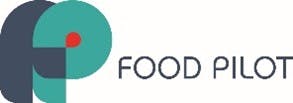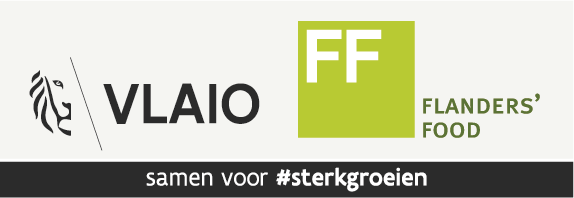Dit webinar over SENSOREN, DATA en DATAVERWERKING van 23 juni lokte maar liefst 130 online deelnemers, een absoluut succes voor een eerste webinar! Voor wie dit toch heeft gemist: je kan alles rustig herbekijken via de linken. De meerwaarde van een aantal specifieke sensoren en datasystemen voor het optimaliseren van de productie, werd afgetoetst aan reële uitdagingen voor voedingsbedrijven, zoals hygiëne, procesoptimalisatie en productkwaliteit. Algemene principes werden toegelicht, alsook de testresultaten uit het onderzoek.
Program
Part 1. Hygiene and sterilization
Detection of microbial contamination and targeted cleaning and disinfection. Koen De Reu
Hygienic practices before and during production are important to ensure shelf life and to produce safe food. Thorough evaluations of the cleaning and disinfection and tracing of contamination sources and routes are essential.
- Guidelines for and experiences with microbiological environmental sampling are discussed practically.
- Practical examples of the use of microbiological hygiene criteria for the assessment of food are also given.
Rapid E. coli detection: a bio-sensor in development. Marc Heyndrickx
A new biomimetic sensor has been developed that allows a sensitive, fast and specific quantitative detection (LOD 100 cfu/of E coli in a wide range of concentrations, in both buffer and food e g apple juice)
- Principle based on recognition of target organism by a specific surface imprinted polyurethane layer on a chip built into a flow cell
- Developed by KU Leuven, in collaboration with ILVO and other research institutions Further exploration in the Interreg AgrEUfood project.
Optimizing sterilization: F0 value for translation from pilot to production. (DEMO included!). Estelle De Paepe
The Food Pilot expanded its UHT pilot machine with intensive temperature measurement and real life data processing. This makes it possible to determine the F 0 value more accurately online, and this over the entire course of heating, holding and cooling
- The F 0 value allows to compare processes on an equivalent basis This makes a process optimized at pilot scale more translatable to a production scale
- Especially for " such as starchy emulsions, the heat treatment is meticulously tuned to preserve the taste, color and rheology of the product Material properties can change during heating, especially with these products, which makes a correct determination of the F 0 value all the more crucial.
Part 2. Spectral & Machine vision technology
Hyper- and multispectral technology: applications in meat and vegetables. (DEMO included!). Simon Cool
We start from a problem or question. “Can a camera be able to distinguish class X from Y? Which quality parameters can be estimated?” For this we work step by step We screen the visual and near infrared spectrum with hyperspectral cameras, looking for wavelengths with useful information. Based on this, commercially available cameras suitable for the application are advised.
Results of a small scale measurement campaign for fast inspection of pork meat quality are shown. Correlations are studied between reference parameters (intra muscular fat, color, pH, cooking loss), NIR spectrometer data, and hyperspectral images Live demo of a NIR sensor with meat probe (ASD Labspec 4 Inventech) and a hyperspectral camera Specim FX 10e Spectrapartners Study in cooperation with Ghent University (Project Vlevavlees). Also, a case study on soy is shown, in which fat, protein and moisture content in determined As well as a case on beans, in which stems of weeds are distinguished from the beans.
Machine vision using Artificial Intelligence: application example. (DEMO included!). Simon Cool
We explain the power of artificial intelligence and its potential for food applications. Based on machine learning, a case study is demonstrated sorting sweet peppers into two quality classes.
Meer info? Contacteer de individuele sprekers, de Food Pilot (Karen.Verstraete@ilvo.vlaanderen.be) of Flanders’ FOOD Bart Van Damme.

